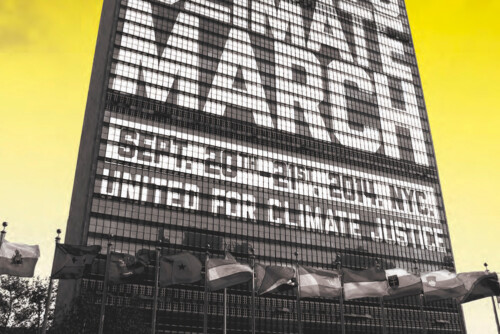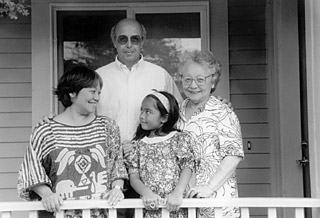In addition to changing the ways we conceptualize identity, engaging abolition requires us to reevaluate fundamental assumptions about the issues that have been central to the field. For example, in relation to violence, abolitionist perspectives lead us to rigorously ask how we might address heteropatriarchal violence without the use of prisons, a question that the naturalization of incarceration usually forecloses. Asking this question can lead us to rethink the very ways in which violence against women and queer and transgender people has been theorized by moving us away from individual perpetrators and victims and toward more systemic analyses of what enables the pervasiveness of violence. This shift can help us link interpersonal violence to the forms of state violence it is embedded in.
Violence is a central issue that WGSS classes engage, and many students who take our classes do so as one way of understanding and coming to terms with the violence they have experienced in their own lives. In this sense, talking about violence in the classroom is not simply an intellectual exercise; rather, it is to enter a minefield of complicated feelings and traumas. These feelings often present a significant challenge to talking about abolition. On the one hand, university classrooms are frequently hostile to feelings. Understood as the antithesis of intellectual activity, feelings are generally devalued within universities. On the other hand, particularly within women’s studies, a dominant response to this hostility has been to take feelings as the uncontestable truths of women’s experiences, again rendering them outside of the realm of critical thought. Often, it is feelings of rage, fear, insecurity, etc., that shut down conversation about abolition. These feelings are important and must be engaged in ways that open up rather than close down conversation. One way to do this is to highlight the role of hegemonic narratives in giving expression to feelings. While we tend to think of our feelings as the most honest expressions of ourselves, they are, indeed, shaped by narratives that connect fear to a story about state protection, anger to a need for state-sanctioned vengeance.
Hegemonic narratives make it impossible for certain kinds of violence to be recognized as violence at all, while drawing out particular emotions in ways that legitimize state violence. WGSS classes must make alternative narratives available that can connect feelings of disempowerment to transformative social movements in healing ways. Texts such as Aishah Shahidah Simmons’ film No! 1 do exactly this, and are useful tools in creating a different dialogue. While Simmons’ film honestly engages the trauma of violence, it does so in ways that build historical connections and spark community dialogue. As opposed to criminalizing perpetrators, the film offers avenues for thinking about how violent behaviors emerge from particular structural conditions without absolving perpetrators of violence of responsibility for their actions. Simmons locates violence against Black women in relation to the history of slavery and shows how heteropatriarchy is inextricable from racism. In doing so, the film offers a different understanding of violence, one that connects interpersonal violence to the same structures that shore up prisons. Making these connections paves the way for conversations that explore what safety actually looks like and that mobilize disempowering emotions toward creating a vision of something new.
In reconsidering the relationship between WGSS and feminist and queer social movements, we need to think critically about which movements we engage and how. When we talk about maintaining community connections, it is important to remember that there is no singular community that we are inherently connected to. Rather, part of what we do in our teaching and scholarship is to define the communities that we see ourselves as responsible to. Too often, within WGSS, activism gets reduced to working with established nonprofit organizations that represent the interests of the most privileged women and lesbian and gay populations. Often we find that we are no longer concretely connected to radical social movements or, as in the case of antiviolence movements discussed above, the movements WGSS has historically been connected to have themselves become institutionalized, depoliticized, and invested in neoliberal forms of governance. In the United States, activism is increasingly conflated with working with nonprofits. 2 How do we challenge this tendency in our own work? How can we use our work to build connections to and between different movements, to redirect feminist and queer energies against the prison-industrial complex?
In her critique of the nonprofit-industrial complex, Paula X. Rojas argues for seeing activism not as a job, but as part of everyday life. Rojas draws on examples from Latin America that employ principles of autonomy and horizontalism to build nonhierarchical movements that struggle for self-determination rather than state recognition and institutionalization. These movements emphasize making activism a part of day-to-day living for everyone, rather than an occupation for a few, by collectivizing survival, creating structures that enable everyone to participate, emphasizing that process is as important as outcomes, and investing in long-term base building over just achieving short term goals. 3 Rojas’s analysis raises an important question for thinking about the relationship between the university and social movements. What would fostering this model of activism look like in our work?
First, Rojas’s critique challenges us to situate activism differently within the WGSS curriculum. As noted earlier, within WGSS curricula, activism is frequently conflated with service-learning projects that can easily reduce activist engagements for college students to a kind of job training and reproduce the idea that activism necessarily means working in a nonprofit organization. We should develop structures that encourage and support students in taking on a larger range of projects that are not necessarily housed within nonprofit organizations as part of the activist components of the curriculum. This might include encouraging students to take on projects with decentralized movements, to do organizing work on campus or in other communities they belong to, or to devote time to developing ways of addressing problems that affect their lives with others who share those problems. These kinds of projects might teach students to work in ways that foster horizontalism rather than the hierarchical structures of most nonprofits. When students do take on activist projects within nonprofit organizations, it is important that we create space for students to contextualize and reflect upon the work that they are doing. For example, service-learning projects that are linked to a class about a particular issue—as opposed to the general service-learning requirement that is a component of many WGSS majors—situate work within a nonprofit organization as one dimension of learning about a multifaceted issue. This way, students can pair their experiential learning with reading that provides historical context and engages various social movement perspectives and have conversations about what can be productive in nonprofit work and what is limiting. As Rojas suggests, the point is not necessarily to abandon nonprofits entirely, but rather to move from viewing them as an end in themselves to seeing them as one among many strategies that can be useful to movements. Providing this kind of context can help students develop the skills needed to think about organizations in creative ways. In addition, rather than quarantining activism within a service-learning experience, we might try to think about ways to foster the values of autonomy and horizontalism across the curriculum. Ideally, the feminist and queer classroom should be a space that encourages self-direction rather than reliance on authority figures; encourages productive communication across difference; and challenges students, not just to become empowered in an individualized and often abstract sense, but also to actually make power by working together. 4 In conceptualizing learning goals, we need to think about process as well as content. Creating classroom environments that foster horizontalism and autonomy subverts the individualizing mission of the university and gives students skills to be activists in many dimensions of their lives.
There are many parallels between social-justice oriented knowledge projects within universities and the nonprofit organizations that Rojas critiques. Both depend on state and foundation funding in ways that make them beholden to the very forces they are trying to challenge, employ hierarchical models of organization, cultivate professionalization and careerism, and are inaccessible to large groups of people. Given these parallels, it might be helpful to resituate the university similarly to how Rojas resituates nonprofit organizations. For example, what if we started thinking about institutionalization of programs like WGSS not as an end in itself, but rather in relation to how these programs might be useful to movements for social justice. In this sense, the goal is not necessarily to have our own programs or a permanent place in the university (or even an investment in the university’s permanence), but rather to leverage the university toward a vision of a different society. Even in this austere climate, universities have resources that can be useful to movements, ranging from public space to academics with particular skills to creating an environment in which there is time and space to do sustained analysis. How do we use these resources, not just to build our own departments, but also to foster more broad-reaching social movements?
One way we can do this is by challenging dichotomous constructions of theory and practice that locate the work of making theory in the academy and the practice of making social change outside of it. These dichotomous constructions wrongly assume that the university is the privileged site of knowledge production, and that social movements emerge from outside of it. Rather, it might be more productive to look to knowledge production that occurs outside of the university and to recognize the university as itself an important site of contemporary social struggle. In many ways, this approach returns us to the original vision of the Third World Liberation Front (TWLF) in their efforts to create the first ethnic studies programs—efforts that created an opening for the institutionalization of WGSS as well. The TWLF did not just fight for inclusion within the university. Rather, they sought to transform what counts as knowledge, how knowledge is produced, and the structural exclusion of communities of color from the benefits provided by institutions like the university. Following this model, we must challenge the idea that all knowledge emanates from the university and instead insist on viewing the university as a site of social struggle. Ultimately, this requires us to connect struggles over the neoliberal university to struggles against the prison-industrial complex, both in our teaching and scholarship and in our efforts to transform the conditions under which we labor. Abolitionist frameworks challenge us to let go of our investments in the world the way it is, making space to instead imagine what a world without violence might look like. These frameworks remind us that the end we desire is not a stable, permanent, institutionalized space from which to teach and produce feminist and queer knowledge in a heteropatriarchal, racist, and capitalist university and society. Rather, it is to be a part of making a world without heteropatriarchy, racism, and capitalism. It is crucial that we define our work in relation to this desire rather than the mandates of institutionalization.
- No!: The Rape Documentary, dir. Aishah Shahidah Simmons, DVD, California Newsreel, 2006.[↑]
- Incite! Women of Color Against Violence, ed., The Revolution Will Not Be Funded: Beyond the Non-Profit Industrial Complex (Cambridge: South End Press, 2009).[↑]
- Paula X. Rojas, “Are the Cops in our Heads and Hearts?” The Revolution Will Not Be Funded: Beyond the Non-Profit Industrial Complex, ed. Incite! Women of Color Against Violence (Cambridge: South End Press, 2009) 197-214. Reprinted in this issue.[↑]
- Rojas 2009: 199-200.[↑]




